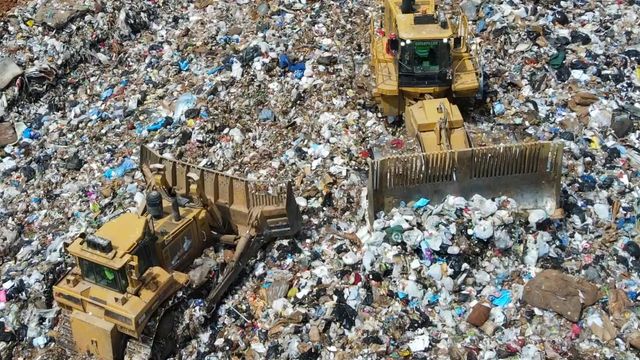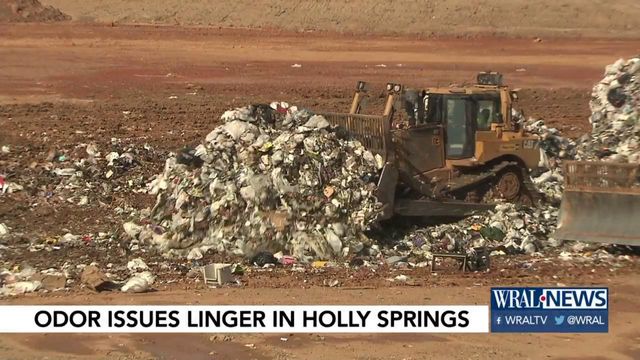Wake County's landfill is expected to reach capacity in the next 20 years. Where will the county put all its trash?
Wake County has a problem that many growing areas across the country are facing: Where do people put all their trash?
The county’s 300-acre landfill in Apex is bursting at the seams.
The county is already home to 1,150,204 people, according to July 2021 data from the U.S. Census Bureau.
County leaders estimate 62 people move to Wake each day, and more than 225,000 new residents moved to the area over the last decade. By 2040, the county estimates that the landfill will fill to the brim, and the county will need to find a new place to hold residents' trash.
"To some that sounds long way away, but it's around corner," said John Roberson, solid waste director of Wake County.
For most people, they throw away their trash, and they don't stop to think about it anymore. However, many materials that everyday trash is made of — plastic, glass, metal, Styrofoam or aluminum — either don't break down at all or take years to decompose.
"The economy is growing, and so has waste," Roberson said.
The county's landfill takes in around 550,000 tons of trash each year. At some points, the landfill is 100 feet deep, Roberson said.
"If you don’t have a place to put your trash ... look at third world countries that don’t have great trash disposal locations and the health issues," he said.
According to Wake County's 2020 Comprehensive Solid Waste Management Plan, the county disposes of trash at a slightly higher rate than other neighboring counties, mostly due to construction and demolition in the area.
More than 50 mattresses each day dropped off at the South Wake Landfill; they are not easy to break down, according to the plan. More than $1 million in funding goes to breaking down tires, which are expensive to manage and compact, the report also says.
Bianca Bradford Howard, outreach and marketing supervisor for Wake County Environmental Services Department, said there's a way that each Wake County person can reduce how much waste they can produce.
Reduce, reuse, recycle to extend life of the landfill
According to the U.S. Environmental Protection Agency, each American produces on average 4.5 pounds of trash each day, with most of it being paper, paperboard and food waste.
"Choose reusable, bring your own bags to store, bring your own water bottle," Howard said.
The EPA estimates that one-third of all American's food goes uneaten and ends up in landfills. To reduce food waste, experts recommend researching the best ways to store your food so it will last longer. For example, most veggies, should go in the high humidity drawer of the fridge. Most fruits should go in the low humidity drawer of the fridge, according to the EPA.
Developing cities across the globe have struggled with what to do with their trash. Some cities, like San Francisco, made recycling and composting a requirement for all businesses and residences. After implementing this policy, the city exceeded its goals of reducing how much waste was sent to landfills, the EPA said.
Wake County would need a new space, away from urbanization, that would be big enough to hold a new mound of trash, Roberson said.
That new space would need to be "minimum 300 to 400 acres to build a modern landfill," he said.
Wake County's previous landfill filled up in 1998 and was transformed into Green Hills County Park.
The county is offering free landfill tours to help educate people about where their trash goes once the garbage person takes it.











